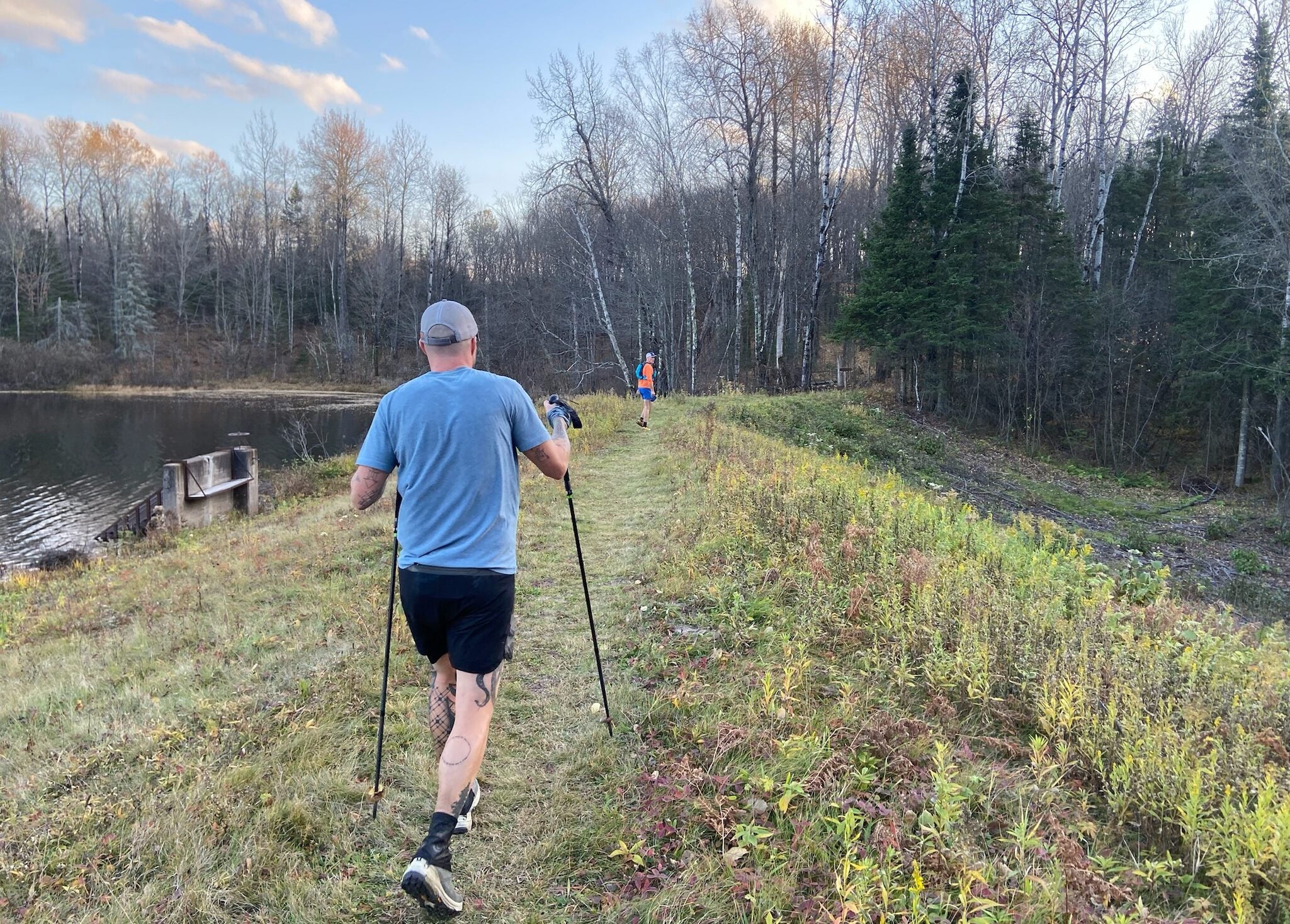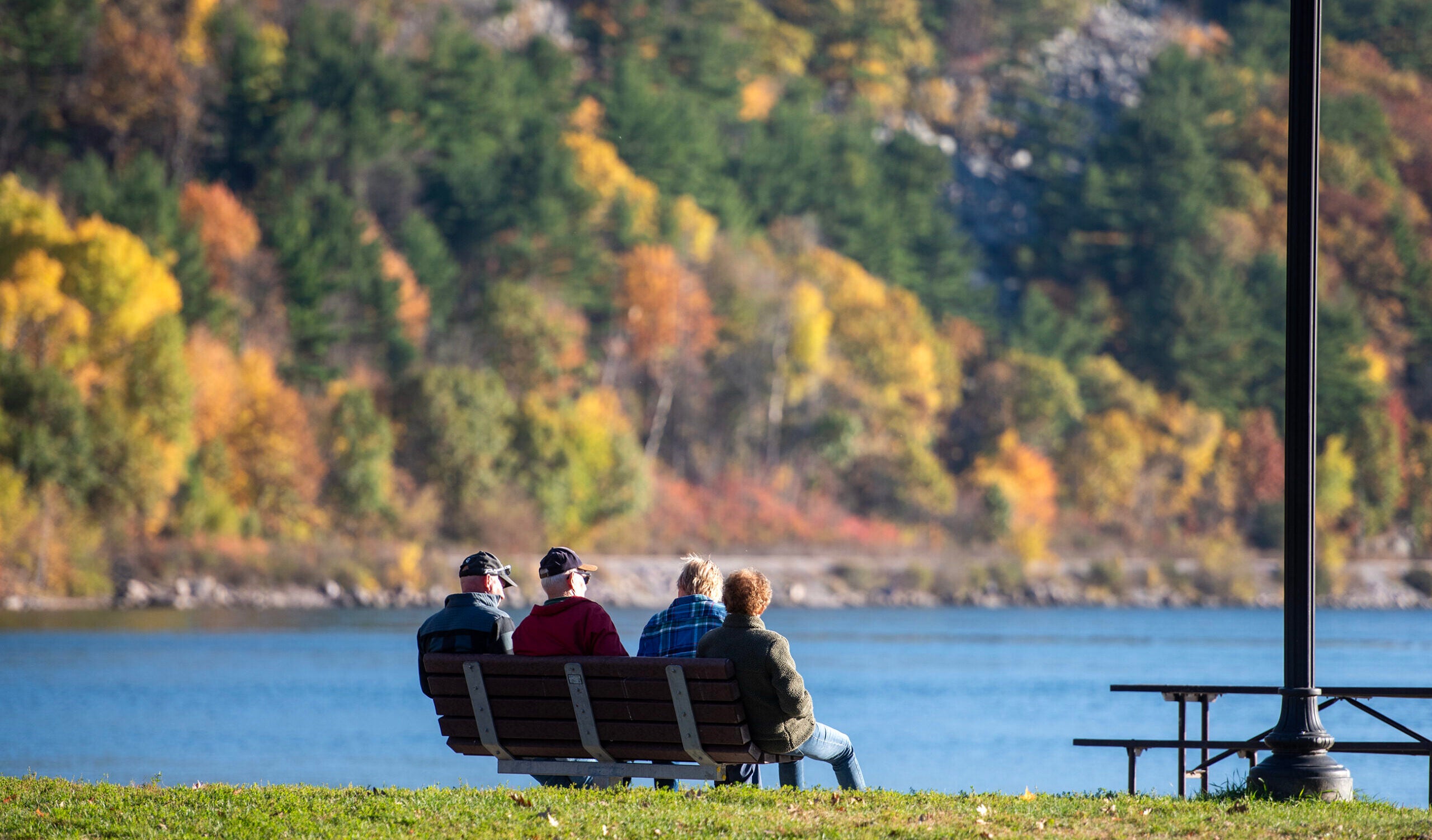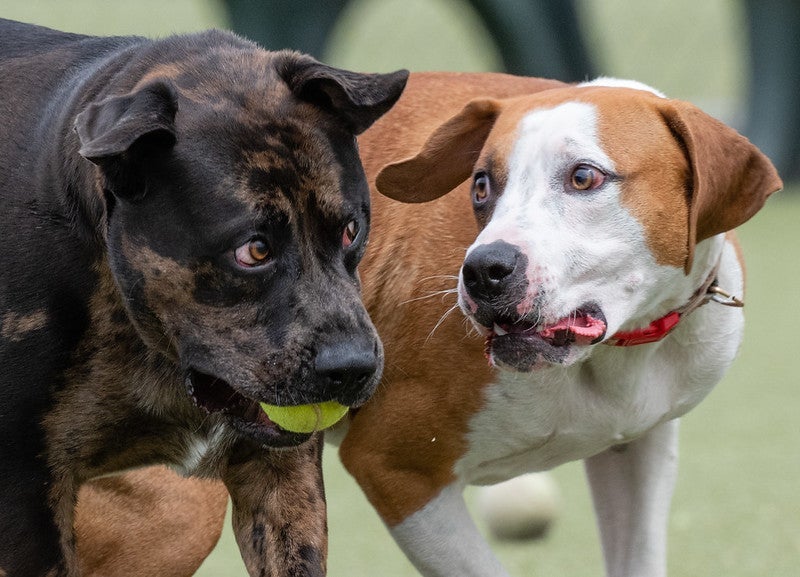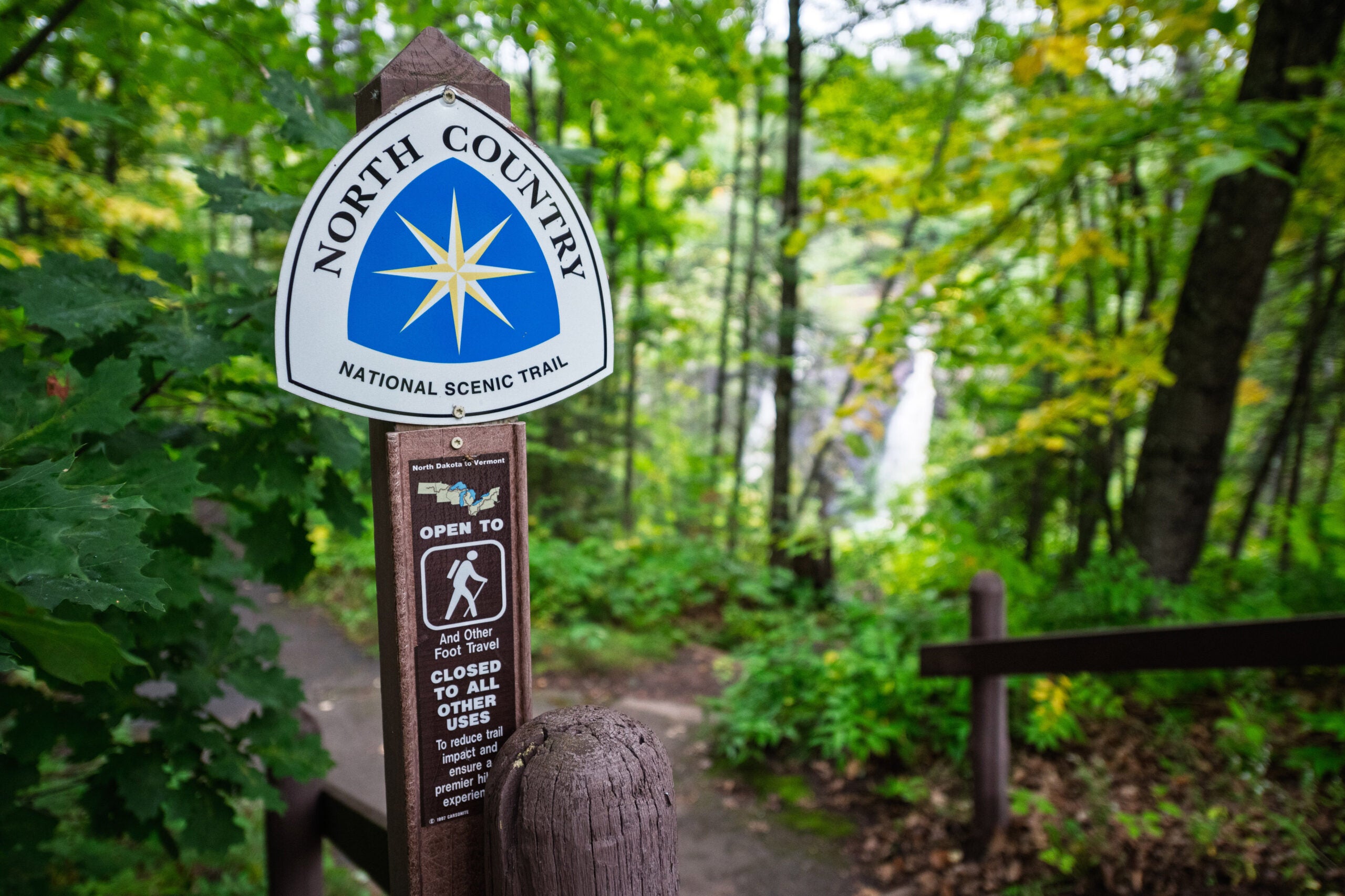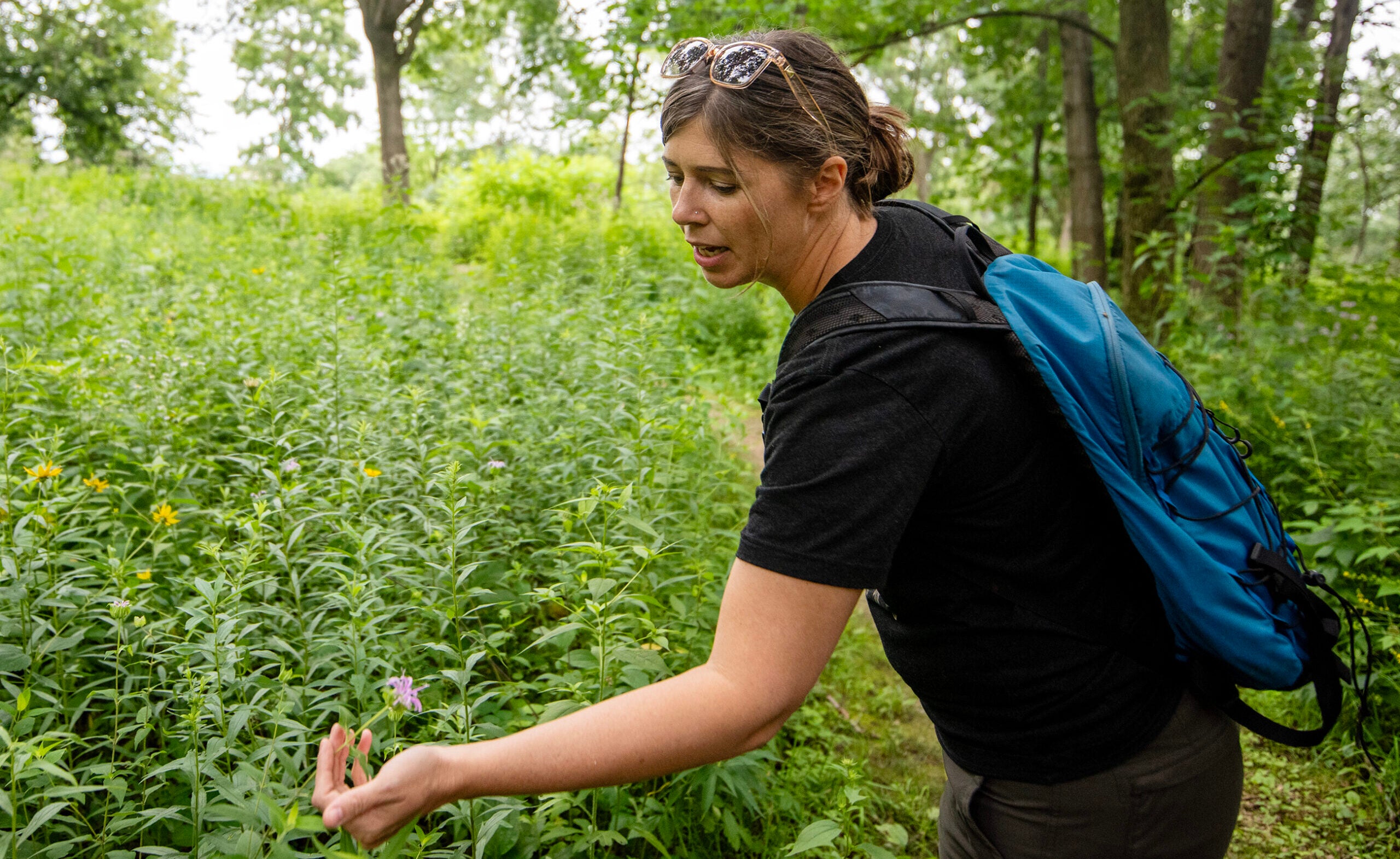When Danielle St. Louis first got her dog Lucky, he had “big feelings,” she said, and “needed a lot of help exploring the world.”
St. Louis took Lucky — a black rescue mutt St. Louis guessed was some kind of border collie and Labrador retriever mix — to special classes for anxious pups. And she took him on practice walks around her neighborhood, getting to know the kinds of things that set him off or made him nervous.
But taking Lucky on hikes seemed more challenging. There was so much St. Louis needed to know about the woods, including potential triggers for her pup.
News with a little more humanity
WPR’s “Wisconsin Today” newsletter keeps you connected to the state you love without feeling overwhelmed. No paywall. No agenda. No corporate filter.
“I still really needed to know a lot of information about where we were going before we went there,” said St. Louis, 42, of Fitchburg. “I couldn’t find information that I wanted about the trails — like, how wide are they? What kind of materials are on the trails?”
Her solution? She and Lucky started heading out on the trail to learn everything they could about how to explore Wisconsin’s state parks together. In 2022, St. Louis published a guidebook to help other families with dogs get out on the trail. “A Dog Lover’s Guide to Hiking Wisconsin’s State Parks” collates tips like where to find dog-friendly swimming areas or picnic areas, and descriptions of trails that are most (or least) favorable to navigate with a leashed friend, along with hand-drawn maps, anecdotes and histories of each of Wisconsin’s 50 state parks.
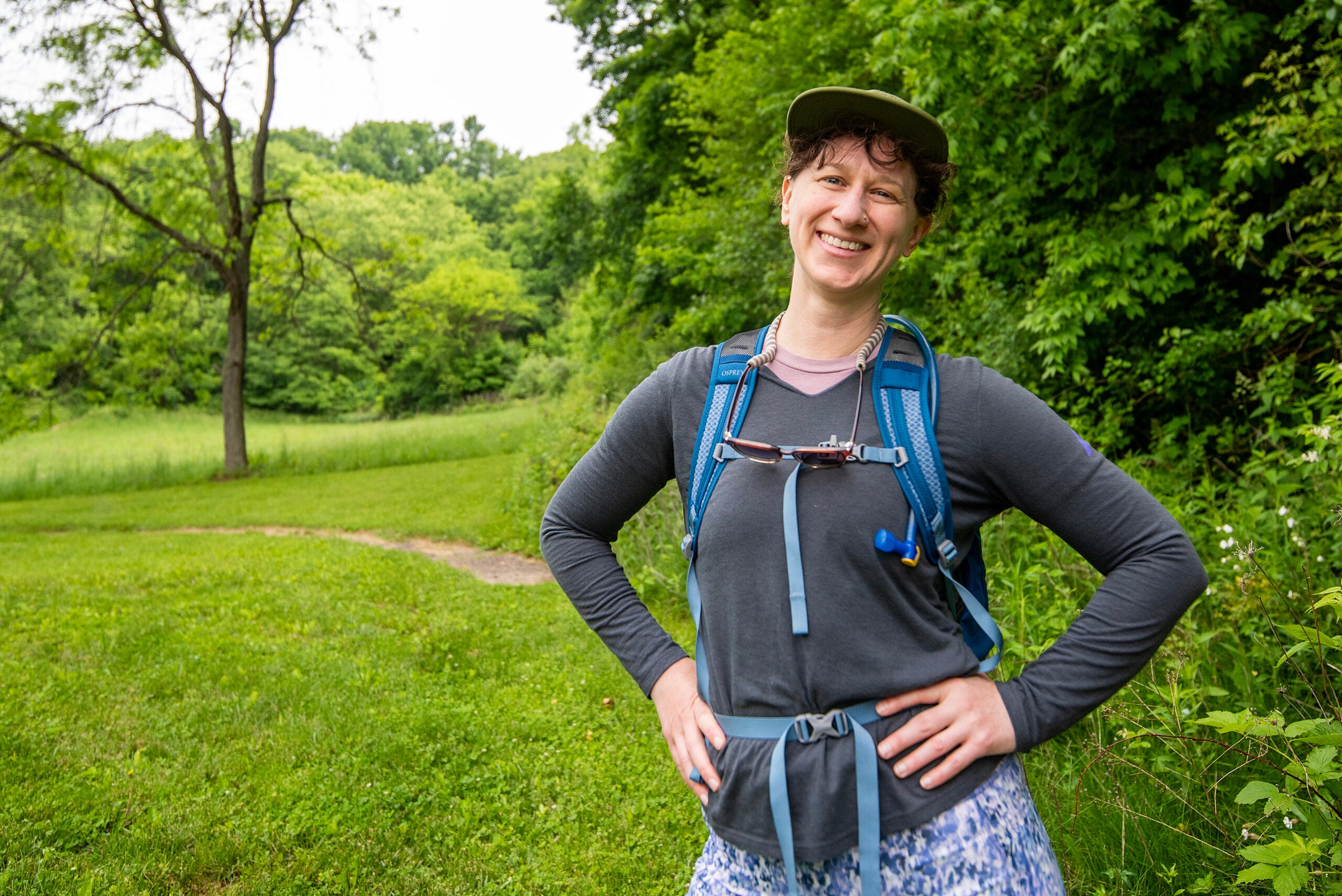
State parks celebrate quasquicentennial this year
There’s a lot of history within the state park system, which celebrates its 125th anniversary this year. (A 125th anniversary is also known as the tongue-twisting name “quasquicentennial.”)
The oldest designated state park in Wisconsin was the aptly named Interstate, straddling the St. Croix River between Wisconsin and Minnesota, set aside in 1900. In 1909, the state Legislature designated a board to maintain what would become a sprawling system of state parks — as well as designated natural areas, state forests and trails, and other public, natural places spanning hundreds of thousands of acres across Wisconsin.
“No question before the American people today is of greater importance than the conservation of our natural resources and the preservation of all those means of health and happiness which through selfishness or thoughtlessness are so likely to be destroyed,” wrote John Nolen, a landscape architect who developed a plan for what would become the state system, in 1909.
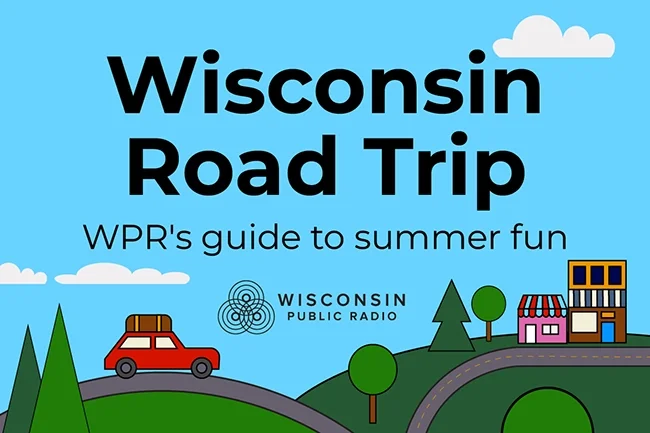
Now maintained by the Department of Natural Resources, state parks offer different leisure activities: hiking, camping, boating, fishing, hunting, climbing. Some comprise sandy beaches, winding rivers, tall bluffs and archeological remains. They’re funded by a mix of state dollars and visitor fees, from the little sticker you can attach to your dashboard for all access, to permits for camping or hunting.
In his presentation to what was then a three-person state parks board, Nolen argued that Wisconsin needed a robust system of parks to compete with other states, invest in Wisconsin’s legacy as a relatively young state and offer spaces for people’s enjoyment and health.
“On the economic side Wisconsin is fully awake to the importance of [conserving public lands],” Nolen wrote. “It is quite natural, therefore, that the State should now show itself equally ready to consider natural resources on other sides—those related even more directly to the physical and moral health and the happiness of the people.”
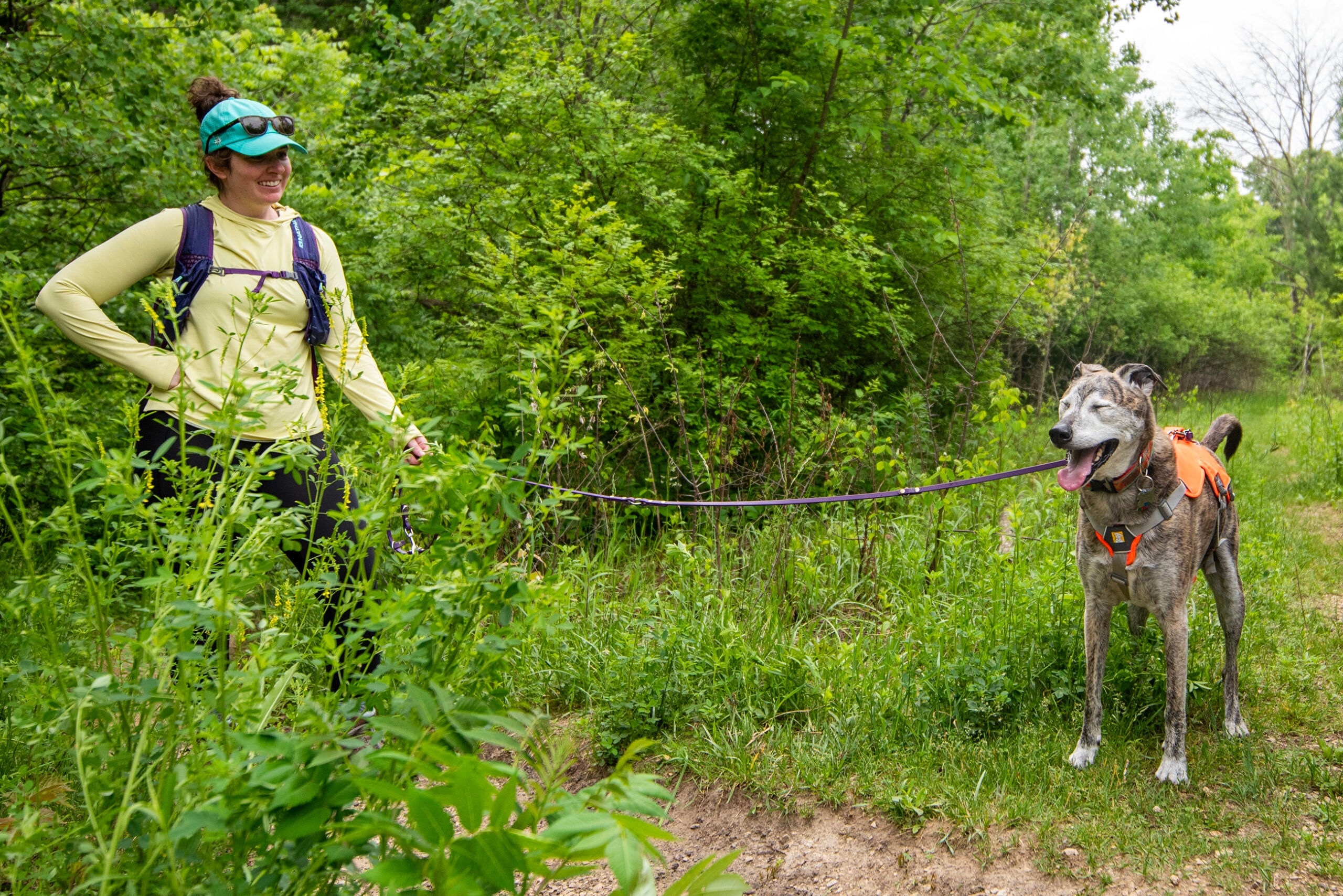
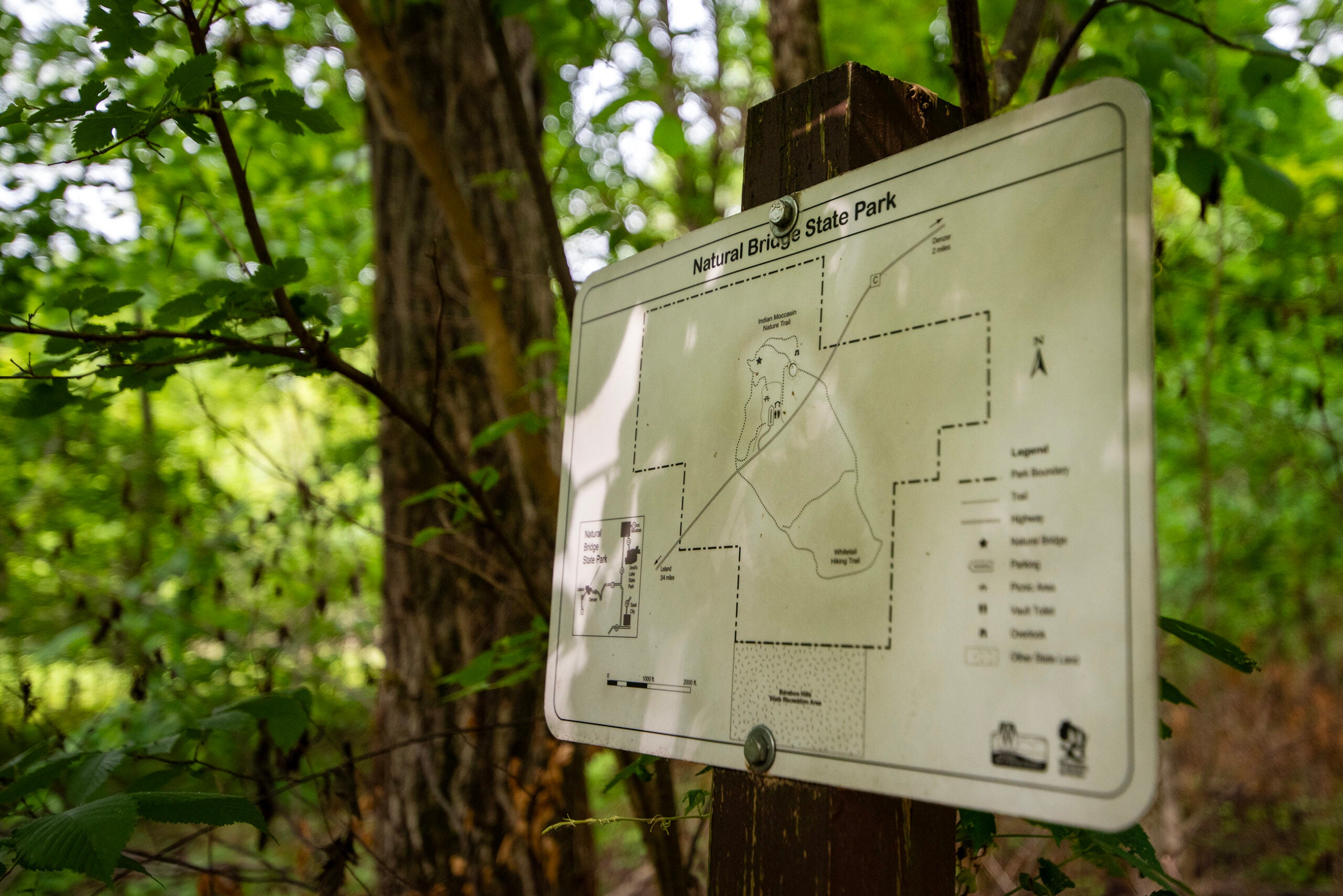
Leashing, planning ahead are key to being a conscientious dog owner on the trails
More than 60 years later, the state added Natural Bridge State Park in Sauk County to its registry. And half a century after that, on a recent June Saturday, St. Louis was joined by two friends that she met through classes for people with similarly anxious dogs.
Ellen Wargowski of Madison brought Bailey, and Anna Shircel of Mount Horeb brought Rizzo — both “mystery mutts,” Wargowski said.
Missing from the group was Lucky, who died in 2023 at age 14. But he was memorialized on St. Louis’ body as the group headed into the woods. On St. Louis’ right and left thighs are tattoos of Lucky.
In one, he’s carrying passenger pigeons on his back — a once-ubiquitous but now-extinct species memorialized at Grant County’s Wyalusing State Park. St. Louis said that park was a favorite spot for her and Lucky, and the loss of the pigeons, which went extinct in 1914, “resonates with, I think, a lot of the environmental and ecological things that we’re dealing with today.”
The five made their way through a mile-long loop in the park, reflecting on some of what they’ve learned about being conscientious dog-owning hikers. A central tip was written seven times across Wargowski’s purple shirt: leash your dog.
“Leash laws exist to protect the land and the wildlife and the visitors to the park. So it’s about being respectful of other people’s needs, too,” Wargowski said. “Being able to explore the land with our dogs is a privilege.”
She also kept snacks on hand to keep Bailey’s attention when critters ran by. Shircel kept Rizzo extra close as they approached two workers clearing trail with a chainsaw, knowing that sudden sounds can be spooky.
Knowing your own dog’s quirks and triggers and preparing accordingly is key to success on the trail, St. Louis said. That can mean planning ahead for how to get space from other visitors as needed.
“There are some trails where trying to do that would be really perilous,” she said. “A lot of Wisconsin state parks have trails that turn into cross–country skiing trails in the winter, and those are great trails in the summer to take your dog on if they need a lot of space because they’re generally quite wide.”
That’s not the case at Natural Bridge, where the trails were narrow and, on a late spring day, hugged tightly with new growth.
“Look down and look up and look down and look up,” St. Louis said, laughing, as she narrowly missed a slender tree branch that emerged suddenly on the path.
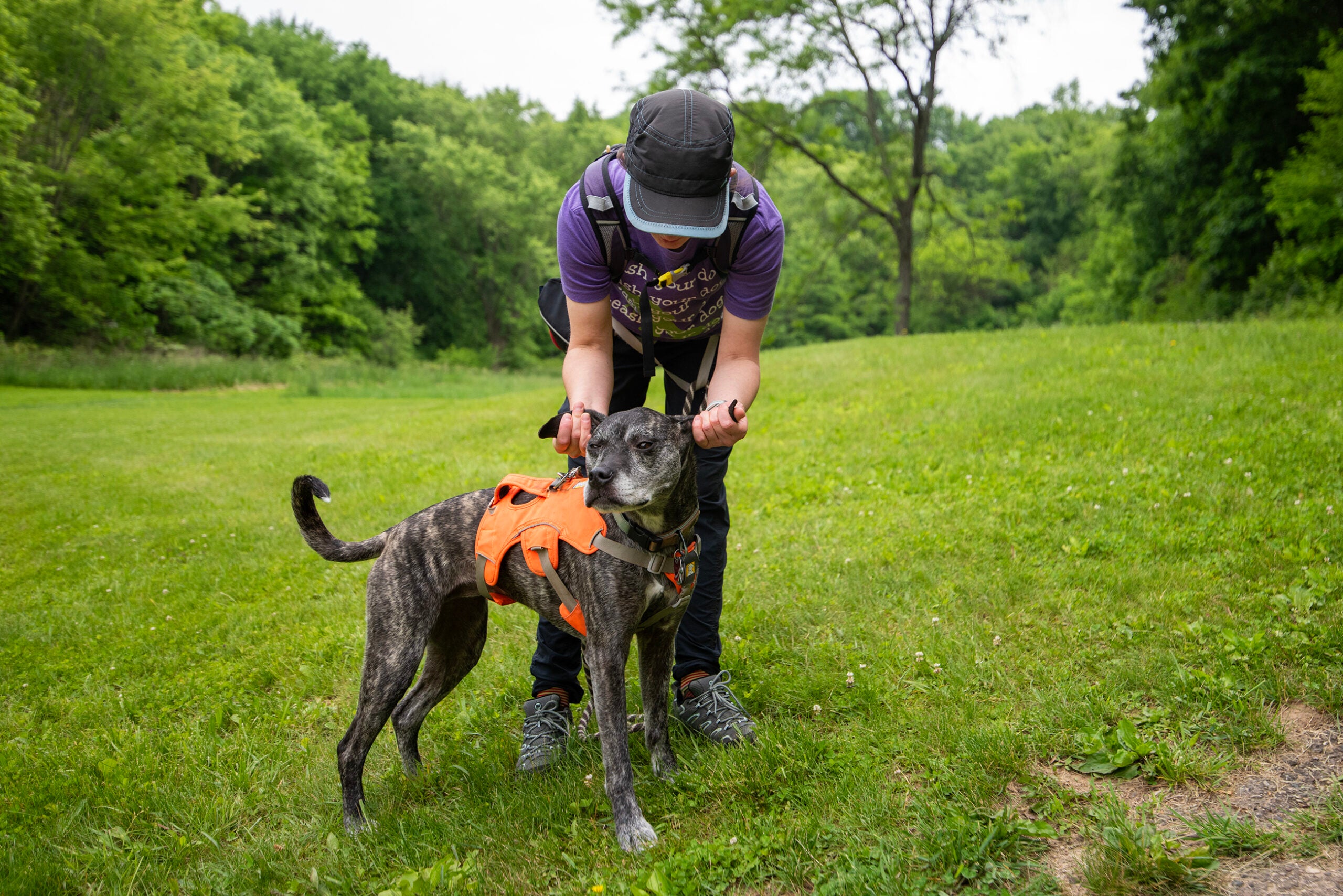
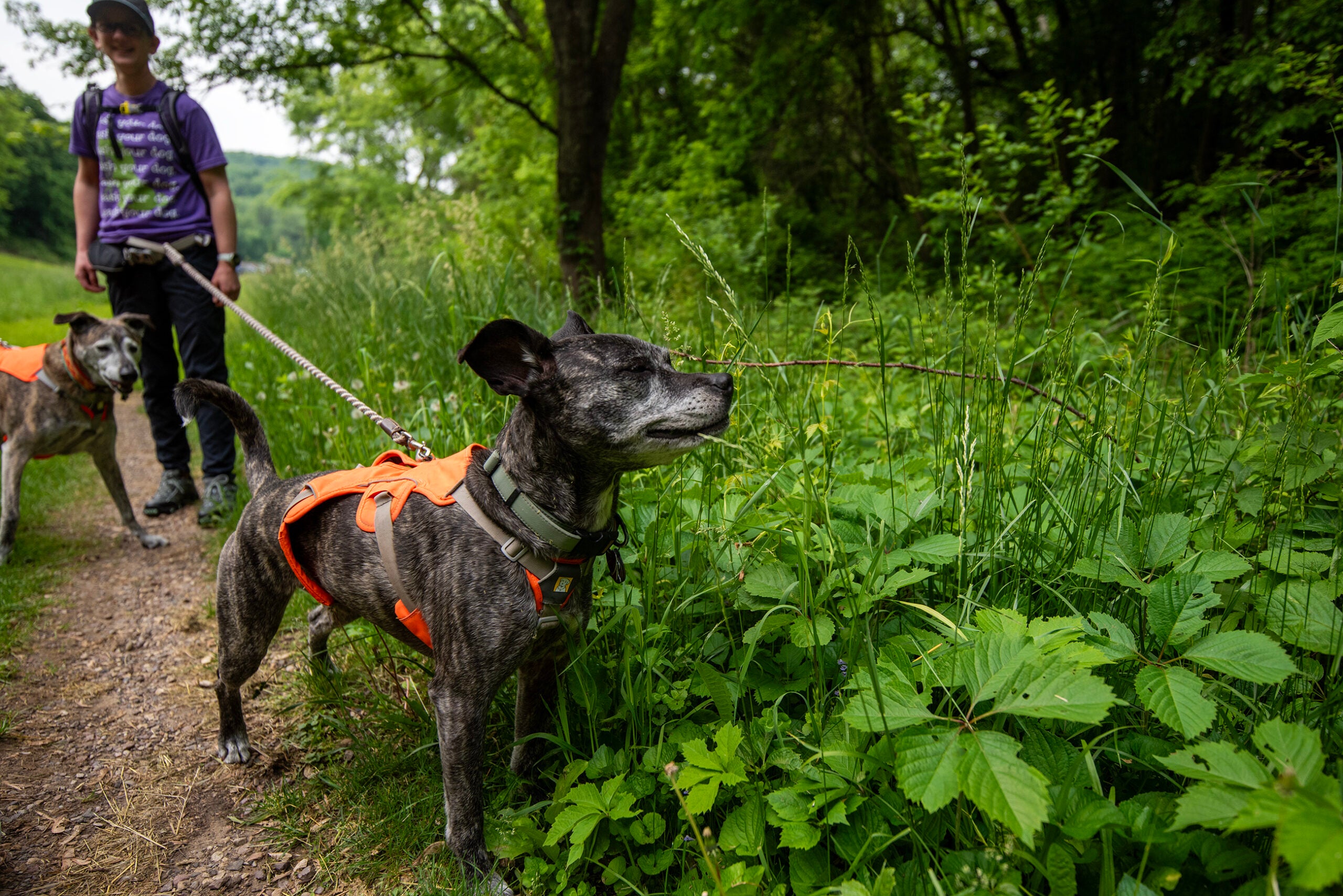
Respect history, natural spaces — and check for ticks
The narrow trail widens suddenly at the highlight of Natural Bridge: the titular natural bridge. A 25-foot-high sandstone arch, the largest in the state, formed over years of erosion from wind and water. A weathered sign beneath prohibits visitors from climbing onto the bridge, which drips with grasses and vines and sprouts small trees from its crags.
Instead, hikers can walk toward a rock shelter underneath, a deep and dark inlet first uncovered more than half century ago. Archaeologists in 1957 found charred remains of old campfires, indicating that early humans were using it to rest, or even live, some 11,000 years ago. Archeologists estimate it’s one of the oldest sites that humans occupied in northeastern North America.
“[It’s] wild to think that early humans were living here, and it’s not that far from my suburban house in Fitchburg,” St. Louis marveled.
The trail was shaded with oak trees, and hikers can tack on a stop at an overlook — as St. Louis, Wargowski and Shircel did, pausing for a photo with their dogs. As the morning wore on, sparrows, goldfinches and thrashers sang merrily in the trees, and even on a fairly low-effort hike, the group stopped frequently for water.
“It can get pretty hot and humid in Wisconsin, and dogs overheat a lot faster than people do,” St. Louis said. “You might feel like you can go for a couple more miles, but just [make] sure that you’re keeping your dog’s experience and comfort and safety in mind.”
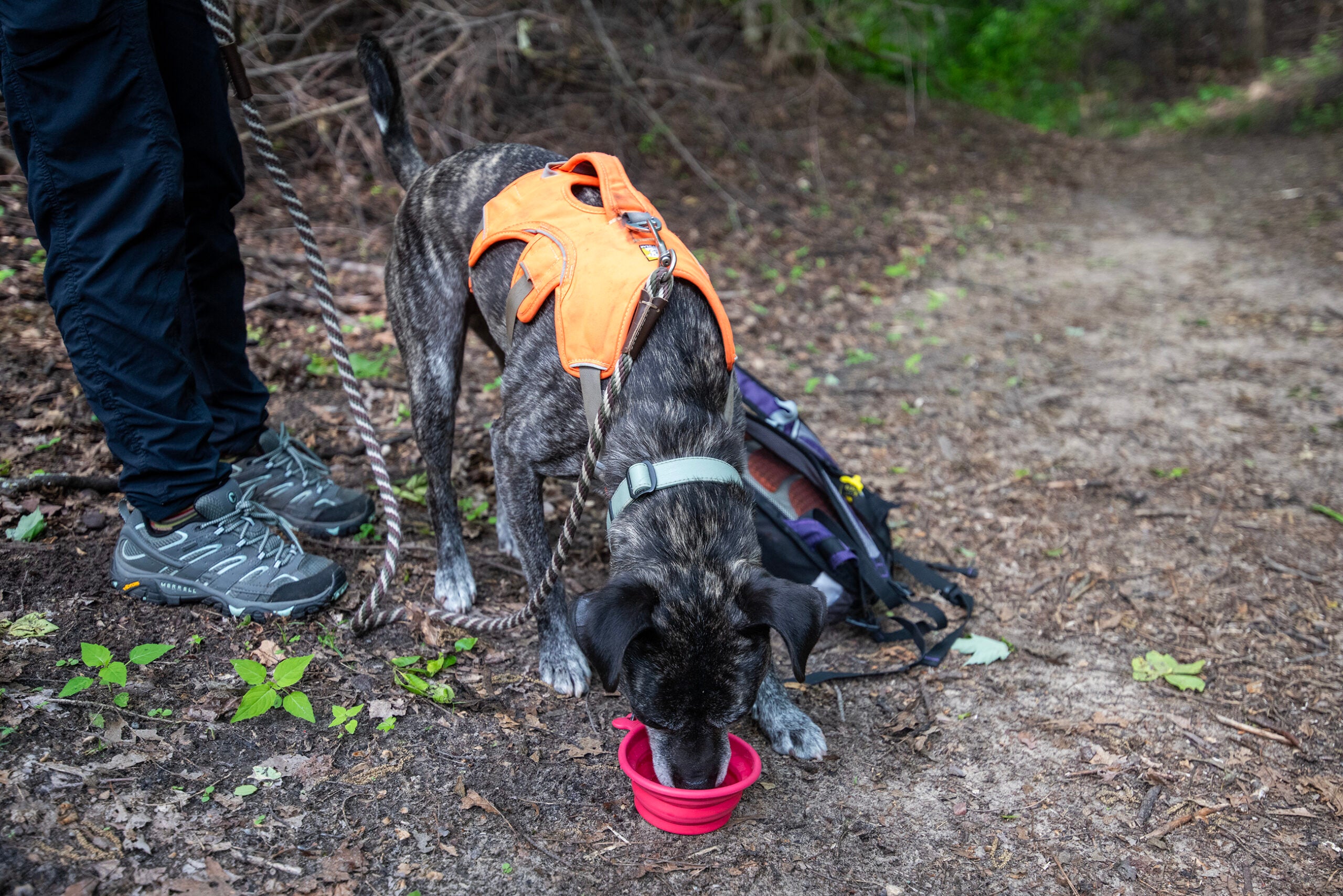
Elsewhere in the park, during some weeks of the year, hunting and trapping is allowed, and St. Louis advises dog owners to know those dates and get some blaze orange to keep themselves and their pets safe.
And back in the parking lot, she had one more safety tip: “I love to talk about tick checks.” The tiny creatures can carry Lyme disease, and both people and dogs can unknowingly bring them home after a day in the woods.
And one more overarching thought about being out in Wisconsin’s state parks: “Just be respectful.”
“If we want to have these public places, we all need to be conscientious of how we’re using them and of the other people that are using them,” she said.
The group checked over their dogs and themselves, and took one last long drink of water. Then it was time to head back into the real world.
WPR reporters are making pit stops across the state to explore some of the people, places and things that make Wisconsin summers special. See all the stops and plan your own roadtrip at wpr.org/roadtrip.
Wisconsin Public Radio, © Copyright 2026, Board of Regents of the University of Wisconsin System and Wisconsin Educational Communications Board.



